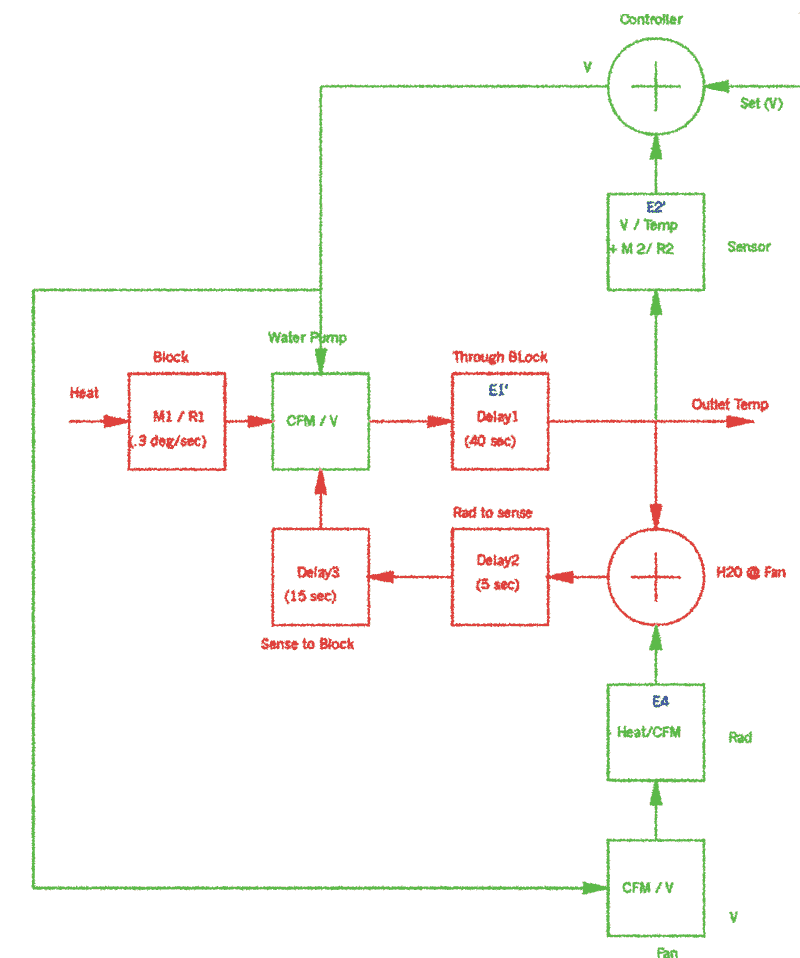|
The diagram above shows the operation of the WP series controllers. The mechanical related components are shown in red and the controller related components are shown in green.
From the left, the heat of combustion enters the block byway of the combustion medium., the thermal resistance of the mixture provides a slow rise in temperature on the order of .3 degrees per second. The coolant flows through the block in order to scavenge heat to be transferred to the radiator, as the temperature of the coolant moves through the block its temperature rise is influenced by the flow rate of the coolant, the heat capacity of the coolant, and the heat generated.
The coolant takes approximately 40 seconds to travel through the block and to the radiator before the heat is transferred to the radiator where the heat is removed from the system. The sensor measures the temperature of the coolant at the engine output and converts the temperature to a tracking voltage; the controller compares this voltage to the set voltage (jumpers), and outputs a control voltage to the water pump and fan that is proportional to the difference in these voltages. The water pump responds and increases the coolant flow in order to transfer more heat to the radiator. The fan, which is slaved off of the water pump, then pulls that heat from the radiator in order to keep the coolant at the set temperature. A second delay, from the radiator to the block occurs and then the cycle repeats.
Fortunately, the heat is largely dissipated into the cylinder head, which is near the sensing point, so the delay from the coolant at the head to the coolant at the probe is low and causes almost no delay in the reaction time of the controller. This error, E1', is significantly small, given that the rise in temperature is only .3 degrees per second. A second error, E2' will occur if the probe is not well thermally coupled to the engine outlet, but, as with E1', the error is very small due to the direct coupling of the sensor to the engine outlet.
Because the design results in very low measurement errors, a very stable engine temperature, void of any heat cycling with a full-off to full-on variance of only seven degrees is typical. |
